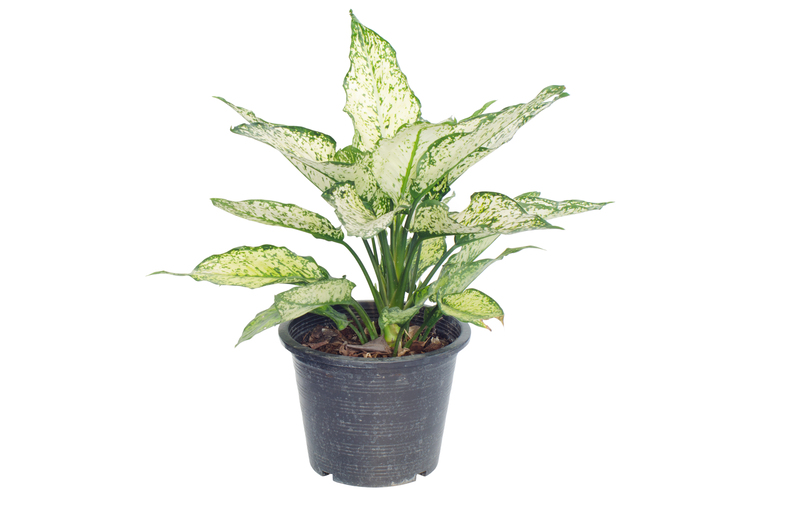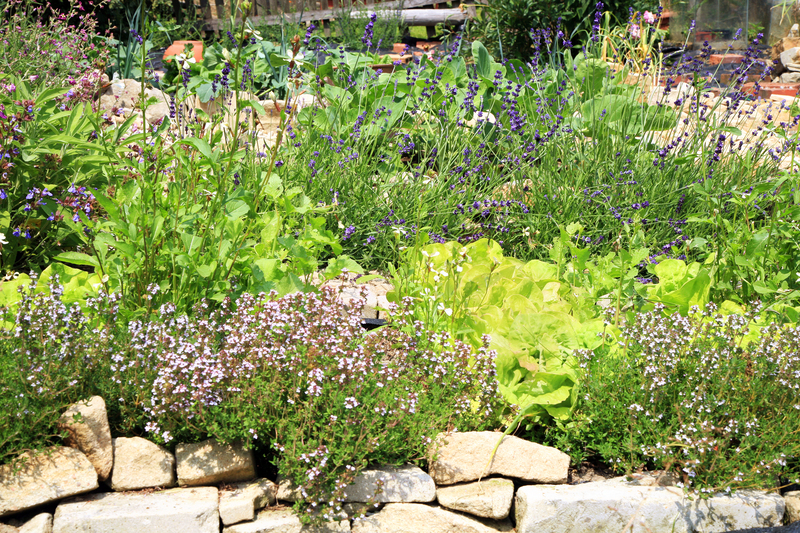Transforming Waste into the Future of Fertile Soil
Posted on 18/08/2025
Transforming Waste into the Future of Fertile Soil: Paving the Way for Sustainable Agriculture
Soil fertility is the cornerstone of sustainable agriculture and global food security. As the world grapples with the challenges of increasing waste production and declining soil health, innovative solutions are being sought to revolutionize how we manage organic waste and enhance soil productivity. Transforming waste into the future of fertile soil is more than a trend--it is an urgent necessity shaping the next era of farming, sustainability, and ecosystem restoration.
This comprehensive article explores the science, methods, benefits, and global impact of turning organic waste into fertile soil, providing actionable insights for farmers, gardeners, policymakers, and eco-conscious consumers alike.

Why Transform Waste into Fertile Soil? The Need for Sustainable Solutions
The Global Waste Crisis
Every year, the world generates billions of tons of solid waste, the majority of which is organic in nature. According to the World Bank, nearly 44% of global waste is organic, including food scraps, agricultural residues, yard trimmings, wood, and paper. Too often, this valuable resource is simply discarded, adding to overflowing landfills, producing harmful greenhouse gases, and leaching toxins into precious groundwater.
- Landfills emit methane, a potent greenhouse gas that accelerates climate change.
- Leachate from decomposing organic matter contaminates water supplies.
- A linear economy of "take-make-waste" depletes natural resources and harms biodiversity.
Soil Degradation: A Growing Challenge
At the same time, soils worldwide are depleting at an alarming rate due to unsustainable farming, erosion, chemical overuse, and loss of organic matter. According to the United Nations, we may have fewer than 60 harvests left if soil degradation continues unchecked.
The connection is clear: diverting organic waste streams to enrich and rebuild fertile soil presents a win-win for both waste management and food production.
The Science of Converting Waste into Fertile Soil
Nutrient Cycling: Back to Nature's Blueprint
Nature's model for soil fertility and waste transformation is elegant and timeless. In forests and natural grasslands, fallen leaves, dead plants, and animal droppings decompose, feeding billions of microorganisms that transform waste into nutrient-rich humus. This process continually renews the soil, allowing life to flourish.
- Organic waste delivers essential plant nutrients like nitrogen, phosphorus, and potassium.
- Soil microbes--including bacteria and fungi--break down waste into humus, improving soil texture, water retention, and fertility.
- This cycle supports larger food webs and resilient ecosystems.
Modern technologies and regenerative agriculture techniques are now harnessing and accelerating these natural processes to recycle waste on a massive scale--and restore fertile soils for the future.
Key Technologies and Methods for Waste-to-Soil Transformation
There are several innovative methods to convert waste into fertile soil, each with its own advantages for different contexts, scales, and goals. Let's explore the most effective and widespread approaches:
1. Composting: The Cornerstone of Fertile Soil Creation
Composting is the biological decomposition of organic materials--like food scraps, yard trimmings, and agricultural waste--into a nutrient-rich, dark, crumbly soil amendment called compost.
- Composting can reduce landfill waste by up to 30%.
- Finished compost restores soil fertility, enhances water retention, and suppresses pests.
- Home-scale, community-based, and industrial aerobic composting systems are scaling around the globe.
- Gathering carbon-rich (browns) and nitrogen-rich (greens) materials.
- Layering, moistening, and aerating the pile to encourage microbial activity.
- Allowing time for decomposition and maturation before application.
2. Vermicomposting: Harnessing the Power of Worms
Vermicomposting uses special species of earthworms (such as Eisenia fetida) to rapidly break down organic waste, producing a rich by-product called vermicast or "worm castings." Vermicompost is an outstanding soil fertility enhancer, loaded with beneficial microorganisms and plant growth hormones.
- Worm castings contain 5 times more nitrogen, 7 times more phosphorus, and 11 times more potassium than ordinary soil.
- Can be used for home, urban, and commercial waste-to-soil projects.
- Effective for transforming food scraps, shredded paper, and certain farm waste.
3. Biochar: Sequestering Carbon and Boosting Soil Health
Biochar is a form of charcoal produced through the pyrolysis (heating in the absence of oxygen) of biomass waste--such as agricultural residues, wood chips, or manure. When applied to soil, biochar provides long-lasting fertility, retains nutrients, and helps mitigate climate change by locking up carbon for centuries.
- Enhances microbial habitats and increases crop yields.
- Improves retention of water and nutrients.
- Has potential for large-scale soil restoration and carbon sequestration.
4. Anaerobic Digestion: Waste-to-Nutrient and Energy
Anaerobic digestion (AD) is a process that breaks down organic waste in oxygen-free environments, generating biogas (a renewable energy source) and digestate--a nutrient-rich byproduct for soil enrichment.
- Widely used for food waste, manure, and wastewater sludge management.
- Reduces odors and greenhouse gas emissions versus landfilling.
- Digestate provides a source of slow-release nutrients and organic matter for restoring soil fertility.
5. Black Soldier Fly Composting: An Insect-Driven Solution
The larvae of the Black Soldier Fly (Hermetia illucens) can consume large volumes of food waste, converting it into high-quality organic fertilizer. Their waste (frass) offers valuable nutrients and microbial activity for soil.
- Suitable for urban and agricultural food waste management.
- Larvae can be used as animal feed, creating a closed-loop system.
These technologies form an expanding toolkit for transforming waste into the future of fertile soils worldwide.
Benefits of Converting Waste into Fertile Soil
Environmental Benefits
- Reduces landfill dependency and lowers methane emissions.
- Recirculates nutrients, reducing the need for synthetic fertilizers linked to pollution and climate change.
- Protects water quality by minimizing runoff and leaching of nutrients.
- Promotes carbon sequestration and combats soil erosion.
Economic and Societal Advantages
- Decreases waste management costs at municipal and farm levels.
- Produces marketable fertilizers and soil conditioners for farmers and gardeners.
- Creates green jobs across the waste-to-soil value chain.
- Supports sustainable, local food systems and food security.
Boosts Food Production and Resilience
- Enhances soil structure, nutrient content, and water retention--crucial as droughts and climate variability worsen.
- Promotes healthy plant growth, higher yields, and reduced pest pressures.
- Regenerates degraded lands, restoring biodiversity and ecosystem services.
Real World Success Stories: Global Innovations in Waste-to-Soil Transformation
Cities Committing to Circular Waste Systems
Major cities like San Francisco, Milan, and Seoul have implemented mandatory food waste composting programs. These initiatives now divert thousands of tons of waste from landfills each year, producing compost for parks, urban farms, and even vineyards, turning city waste into green infrastructure and fertile landscapes.
Zero-Waste Farming in India and Africa
In rural regions, smallholder farmers are combining vermicomposting, crop residue mulching, and biochar to restore soil fertility lost to overuse. These methods have led to substantial increases in yields with minimal external inputs, transforming barren fields into lush, productive acreage and strengthening local food security.
Innovative Enterprises and Startups
A new wave of startups are leveraging technology to streamline and monetize organic waste-to-soil processes. Examples include automated compost bins for urban dwellers, black soldier fly farms in Southeast Asia, and data-driven platforms that connect waste producers with composting facilities. These businesses are proof that economic opportunity and environmental stewardship can go hand in hand.
Challenges and Barriers to Scaling Waste-to-Soil Solutions
Despite the clear benefits, several hurdles remain:
- Contamination: Plastics, glass, and chemicals in waste streams can undermine soil health and limit safe composting.
- Policy Gaps: Some regions lack clear regulations, targets, or incentives for organic waste diversion and soil restoration.
- Cultural and Behavioral Obstacles: Shifting mindsets and habits around waste separation and recycling requires ongoing education.
- Infrastructure Limitations: Investment is needed in collection, processing, and distribution networks, especially in rapidly urbanizing zones.
Innovative solutions, smart policy, and public engagement are essential to overcome these barriers and scale up the transformation of waste into the fertile soil of the future.

How You Can Join the Movement: Steps Toward Fertile Soil from Waste
Whether you're a homeowner, farmer, business operator, or policymaker, you can contribute to transforming waste into fertile soil.
- Start composting at home or in the workplace--turn food scraps into garden gold.
- Join community composting initiatives or advocate for municipal organic waste collection.
- Support producers using compost, biochar, or other sustainable soil amendments.
- Educate friends, neighbors, and colleagues about the importance of waste-to-soil transformation.
- Engage with local officials to strengthen circular economy policies.
- Choose food products grown on regenerative, soil-building farms.
Looking Ahead: The Future of Waste and Fertile Soil
The exciting reality is that transforming waste into the future of fertile soil represents a paradigm shift toward deeper sustainability. Advancements in biotechnology, automation, and data analytics are making waste valorization more accessible and scalable than ever before. Meanwhile, growing climate awareness and a new generation of eco-conscious citizens are championing these changes worldwide.
By redefining organic waste as a resource, not a liability, we have the power to regenerate soils, safeguard the environment, and nourish future generations. Our journey toward zero waste and 100% fertile soils is long, but every compost pile and every enriched field brings us closer to a more sustainable, resilient world.
Key Takeaways:
- Organic waste is a potent resource for soil restoration.
- Composting, vermicomposting, biochar, and related technologies are proven ways to close the loop and build fertile soil from waste streams.
- Converting waste into fertile soil benefits the ecosystem, the economy, and society at large.
- Widespread adoption depends on public engagement, supportive policy, and investment in green infrastructure.
- Every individual and community can play a role in turning waste into the future of fertile soil.
Let's work together to turn waste into a wealth of fertile soil and agro-ecological abundance!

